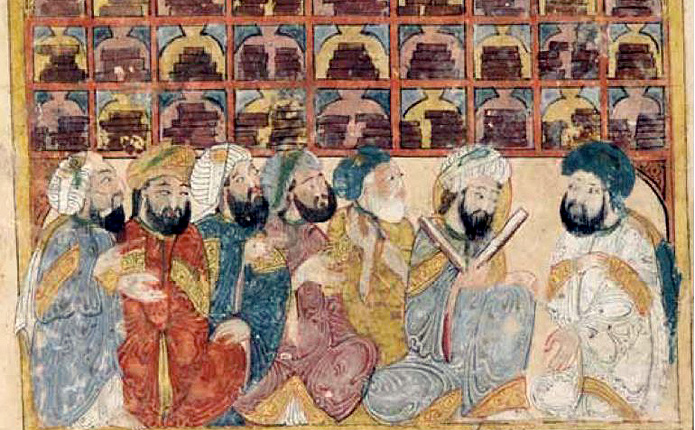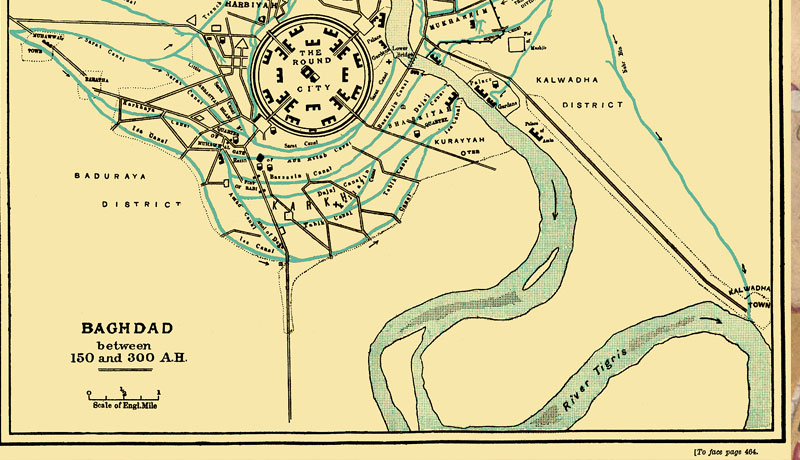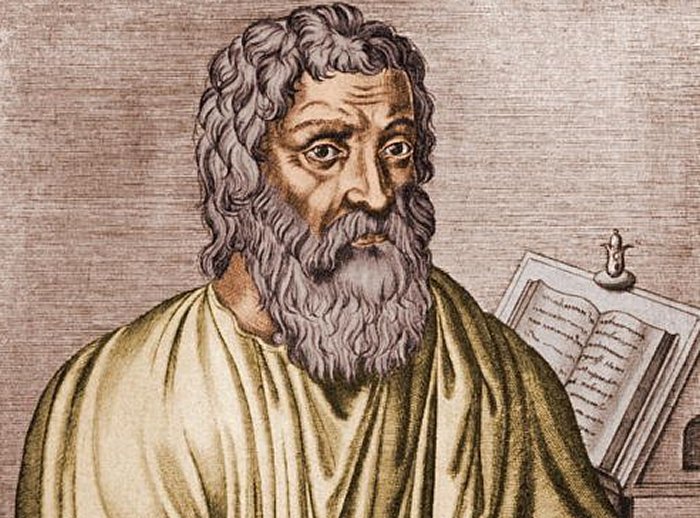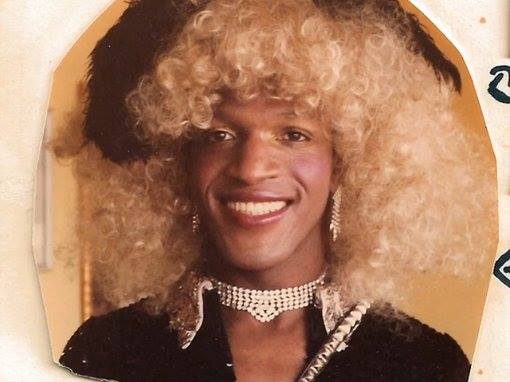When Rome fell Europe was thrust into the so named 'Dark Ages'. However, while the Europeans were scrabbling around, getting the plague and fighting each other over buckets, West Asia was was enjoying a golden age.
This golden age spread across all the Islamic nations, from India to the Arabs living in what is now Andalusia, Spain, and at the center of it all was Baghdad, the wealthy cultural capital of the Islamic world. It was a magnificent city, but the most magnificent part of it was it's House of Wisdom--a large library which also served as a sort of university.
The House of Wisdom was founded in the early 800s by Caliph al-Ma'mun, a highly educated man with an intense interest in science, mathematics, and medicine. There had been many large private libraries prior to this, but al-Ma'mun took things one step further. He had his private library collected under one roof, and made available to scholars--male and female, Muslim and non-Muslim--from around the world. Successive Caliphs followed in this tradition by acquiring more and more books, and expanding on the House. At the time of its destruction, the House of Wisdom not only had an enormous library, but a hospital and an observatory as well.
The library at the House of Knowledge was enormous, and was made even more enormous by several large ticket purchases. During the reign of al-Ma'mun, the entire library of the Kingdom of Sicily was acquired. al-Ma'mun, a scholar himself, had heard of the great library in Sicily, and wrote to the Sicilian King, asking for its contents. The Sicilian library had several classical works about science and mathematics, and all Ma'mun was eager to get his hands on them. The Sicilian king consulted with his advisers, who told him that those books hadn't done the ancients any good, and the Sicilian king gave al-Ma'mun his library, a library which, according to legend, took more than 400 camels to transport.
The translation of texts from Greek, Latin, and Sanskrit into Arabic was highly encouraged. So much encouraged that the Caliph al-Ma'mun offered to pay scholars the weight of a completely translated book in gold. Because of this, scholars translated the works of Aristotle, Hippocrates, and Plato into Arabic, preserving these works for future scholars, and giving scholars to opportunity to comment and study them.
Another notable translation that came from the House of Wisdom, was the translation of several Indian texts about mathematics. This was particularly important because, as you might know, it was Indian mathematicians who invented the concept of zero. In addition to zero, scholars also discovered that Indians used ten separate symbols, or combinations of those symbols, to represent numbers, not letters of the alphabet like the Romans and Arabs up to that point had. This led to experimentation on the part of Arab mathematician, and ultimately resulted in the Arabic Numeral system--the system we use today.
Completely reinventing mathematics wasn't the only major scientific advancement made at the House of Wisdom. The astrolabe--a tool used for navigating the ocean--was invented there, as well as the discipline of chemistry. Additionally, the world's first general hospital--the forerunner to today's modern hospital--was built in Baghdad. There scholars from around the world studied medicine, making advancements in surgery, epidemiology, and physiology.
Much like the Library of Alexandria, the House of Wisdom met an unfortunate and bloody end. In 1258 the Mongols invaded Iraq. They sacked Baghdad, putting the Caliph and his family to the sword. In an act that makes any book loving person furious, they dumped the books from the House of Wisdom into the Tigris river, letting thousands of years of precious knowledge be washed away. Then, to make things even worse, they killed all the scholars. It is said that for years after this the muddy brown waters of the Tigris ran black from ink and red from blood.
Sources
Baghdad: Libraries and House of Wisdom
The Abbasids' House of Wisdom in Baghdad
The House of Wisdom: Baghdad's Intellectual Powerhouse
The House of Wisdom, One of the Greatest Libraries in History
House of Wisdom
 |
| Scholars of the House of Wisdom |
The House of Wisdom was founded in the early 800s by Caliph al-Ma'mun, a highly educated man with an intense interest in science, mathematics, and medicine. There had been many large private libraries prior to this, but al-Ma'mun took things one step further. He had his private library collected under one roof, and made available to scholars--male and female, Muslim and non-Muslim--from around the world. Successive Caliphs followed in this tradition by acquiring more and more books, and expanding on the House. At the time of its destruction, the House of Wisdom not only had an enormous library, but a hospital and an observatory as well.
The library at the House of Knowledge was enormous, and was made even more enormous by several large ticket purchases. During the reign of al-Ma'mun, the entire library of the Kingdom of Sicily was acquired. al-Ma'mun, a scholar himself, had heard of the great library in Sicily, and wrote to the Sicilian King, asking for its contents. The Sicilian library had several classical works about science and mathematics, and all Ma'mun was eager to get his hands on them. The Sicilian king consulted with his advisers, who told him that those books hadn't done the ancients any good, and the Sicilian king gave al-Ma'mun his library, a library which, according to legend, took more than 400 camels to transport.
 |
| Map of Baghdad during its Golden Age |
Another notable translation that came from the House of Wisdom, was the translation of several Indian texts about mathematics. This was particularly important because, as you might know, it was Indian mathematicians who invented the concept of zero. In addition to zero, scholars also discovered that Indians used ten separate symbols, or combinations of those symbols, to represent numbers, not letters of the alphabet like the Romans and Arabs up to that point had. This led to experimentation on the part of Arab mathematician, and ultimately resulted in the Arabic Numeral system--the system we use today.
 |
| An astrolabe |
Much like the Library of Alexandria, the House of Wisdom met an unfortunate and bloody end. In 1258 the Mongols invaded Iraq. They sacked Baghdad, putting the Caliph and his family to the sword. In an act that makes any book loving person furious, they dumped the books from the House of Wisdom into the Tigris river, letting thousands of years of precious knowledge be washed away. Then, to make things even worse, they killed all the scholars. It is said that for years after this the muddy brown waters of the Tigris ran black from ink and red from blood.
Sources
Baghdad: Libraries and House of Wisdom
The Abbasids' House of Wisdom in Baghdad
The House of Wisdom: Baghdad's Intellectual Powerhouse
The House of Wisdom, One of the Greatest Libraries in History
House of Wisdom








